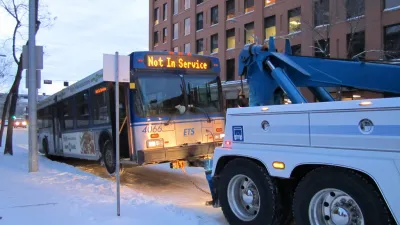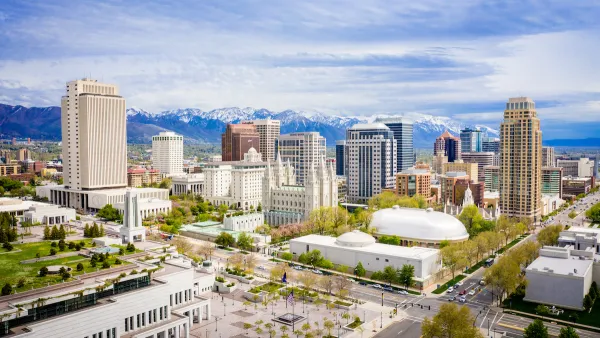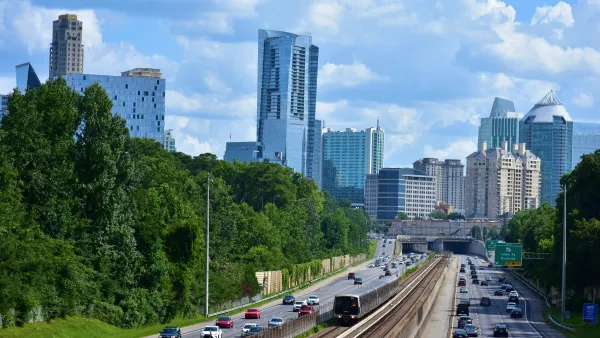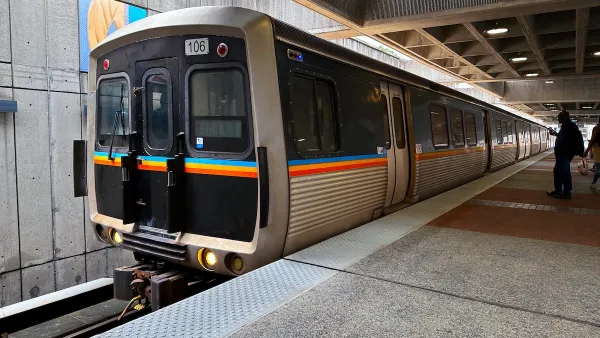Transit authorities often push cuts on the people most dependent on public transit, sometimes called "captive riders." Instead, they focus resources on luring tourists and "choice riders" out of their cars. An article by Samantha Winslow explains.

On one side of town, tourists and young professionals head downtown on light rail: clean, air-conditioned, fast. If there’s a problem with service, the city diverts buses to help.
On the other side of town, workers wait at bus stops. The buses that carry them to work come less and less frequently, thanks to service cuts. Drivers struggle to get through their routes in less time.
Both scenarios are part of a promising trend: transit ridership is at its highest since 1956, with 10.7 million trips in 2013, according to the American Public Transportation Association.
This is despite widespread cuts to bus and rail service—and rising fares. The 2008 economic crisis started the pinch, but federal and local officials have continued to squeeze.
In Pittsburgh, for example, bus riders are still feeling the cuts begun during the crisis, while the city’s seen a boost in light rail, which caters to tourists and people with cars.
In 2011 the transit authority cut its budget by 15 percent, eliminating 29 bus routes. It laid off 180 workers and reduced hours for more. The cuts continued the following year, and the region lost tens of thousands of bus riders. Some switched to cars, if they had one, or carpooling. Others walk now.
“We have whole segments of our community that don’t have any transit at all,” driver Mike Harms said. In neighborhoods where service was slashed, “people have to walk a mile to a bus stop.”
FULL STORY: Transit Irony: The More You Rely on It, the More They Cut

Analysis: Cybertruck Fatality Rate Far Exceeds That of Ford Pinto
The Tesla Cybertruck was recalled seven times last year.

National Parks Layoffs Will Cause Communities to Lose Billions
Thousands of essential park workers were laid off this week, just before the busy spring break season.

Retro-silient?: America’s First “Eco-burb,” The Woodlands Turns 50
A master-planned community north of Houston offers lessons on green infrastructure and resilient design, but falls short of its founder’s lofty affordability and walkability goals.

Test News Post 1
This is a summary

Analysis: Cybertruck Fatality Rate Far Exceeds That of Ford Pinto
The Tesla Cybertruck was recalled seven times last year.

Test News Headline 46
Test for the image on the front page.
Urban Design for Planners 1: Software Tools
This six-course series explores essential urban design concepts using open source software and equips planners with the tools they need to participate fully in the urban design process.
Planning for Universal Design
Learn the tools for implementing Universal Design in planning regulations.
EMC Planning Group, Inc.
Planetizen
Planetizen
Mpact (formerly Rail~Volution)
Great Falls Development Authority, Inc.
HUDs Office of Policy Development and Research
NYU Wagner Graduate School of Public Service




























